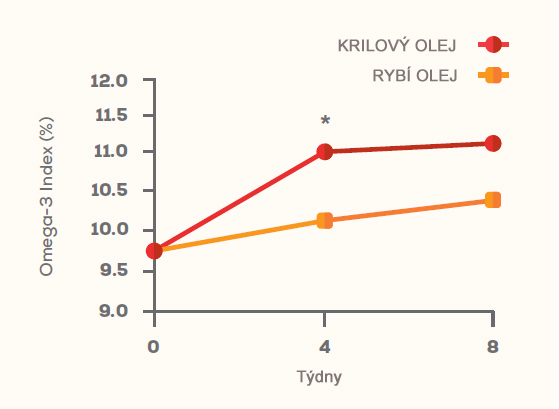Optimalizace omega-3 indexu krilovým olejem
Omega-3 index vypovídá o našem celkovém zdraví. Jedná se o spolehlivý diagnostický nástroj, který ukazuje procentuální koncentraci mastných kyselin EPA a DHA v krvi. Omega-3 index poskytuje informace o dlouhodobém příjmu těchto dvou mastných kyselin a odráží v sobě jejich vstřebávání do buněčných membrán.
Platí, že čím více omega-3 mastných kyselin tělo vstřebá, tím lepší jsou dopady na celkové zdraví organismu. Zlepšení poměru mastných kyselin EPA a DHA vzhledem k jiným mastným kyselinám v buněčné membráně vypovídá o zdravotním stavu každého jednotlivce.
Na grafu vidíte, že účastníci výzkumu měli na počátku průměrnou hodnotu omega-3 indexu 2,0 % – tato hodnota je poměrně nízká. Po osmi týdnech užívání krilového oleje v dávce 2 gramy denně se omega-3 index zvýšil na hodnotu 4,5 %. Jedná se o 125% nárůst.
Prokázalo se, že doplněk stravy Krillan® v porovnání s dalšími zdroji omega-3 mastných kyselin zvyšuje omega-3 index mnohem rychleji a efektivněji.
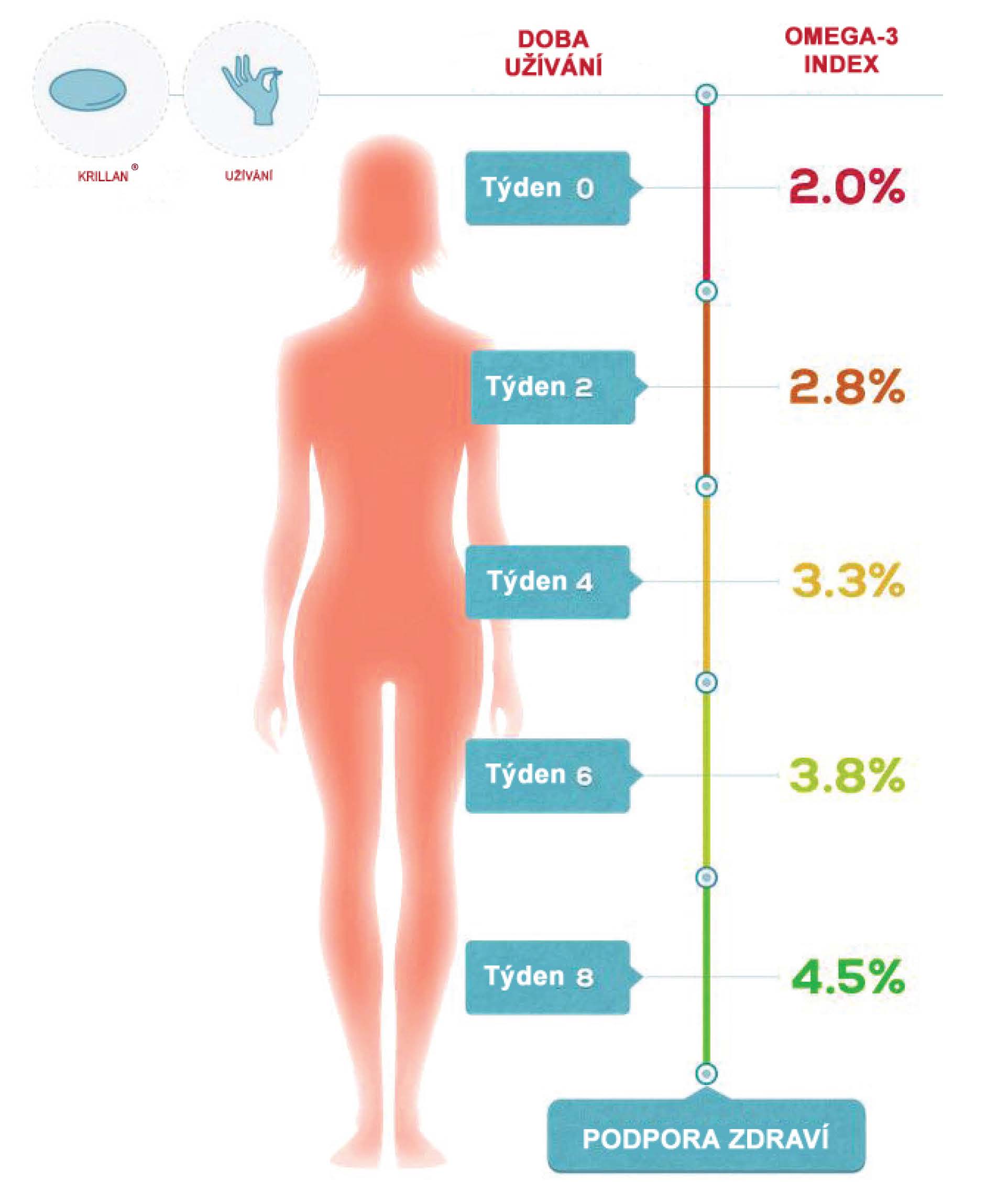

Anatomie omega-3 indexu
Definice omega-3 indexu
Omega-3 index byl navržen jako nový diagnostický nástroj pro zhodnocení rizik onemocnění srdce a cév. Definuje se jako procento mastných kyselin EPA a DHA v červených krvinkách. Zvýšení omega-3 indexu odpovídá vyšší úrovni mastných kyselin EPA a DHA v srdci.
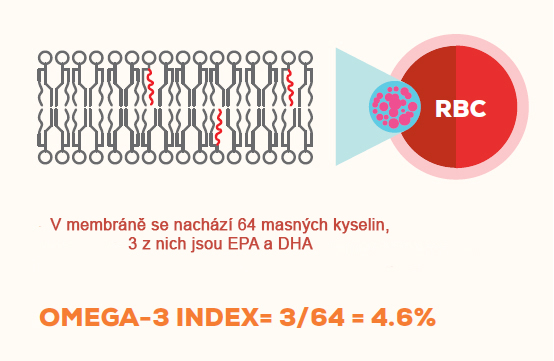

Hladina omega-3 indexu
Omega-3 index odráží stav hladiny mastných kyselin EPA a DHA v tkáních a díky tomu i celkový zdravotní stav. Omega-3 index od hodnoty 8 % a vyšší se považuje za optimální. Nižší omega-3 index naznačuje určité riziko náhlých srdečních problémů.


Krilový olej zvýšil omega-3 index o 70 % více než rybí olej
Osmitýdenní studie na testování účinků krilového oleje zjistila, že tento olej zvyšuje omega-3 index podstatně více než tradiční rybí olej – konkrétně až o 70 %. Během výzkumu se porovnávaly dvě léčebné skupiny. Jedna z nich užívala krilový olej a druhá rybí olej.
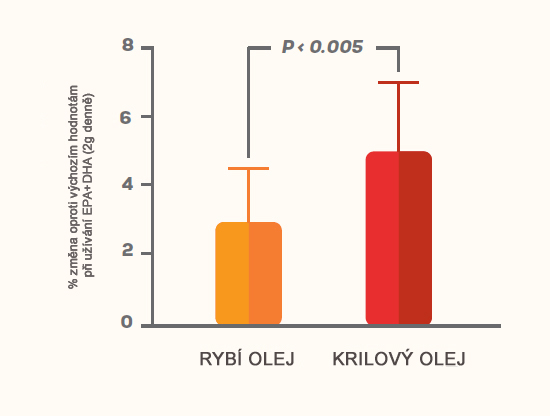

Procentuální zvýšení omega-3 indexu z výchozí hladiny po dvanáctitýdenní kůře s placebem v porovnání s krilovým olejem
Testování probíhalo po dobu 12 týdnů s dobrovolníky, kteří vykazovali hraniční nebo zvýšenou hladinu triglyceridů. Podával se jim krilový olej v množství 0,5, 1, 2 nebo 4 gramy denně. Studie prokazuje, že užíváním krilového oleje u nich došlo ke statisticky významnému snížení hladiny triglyceridů.
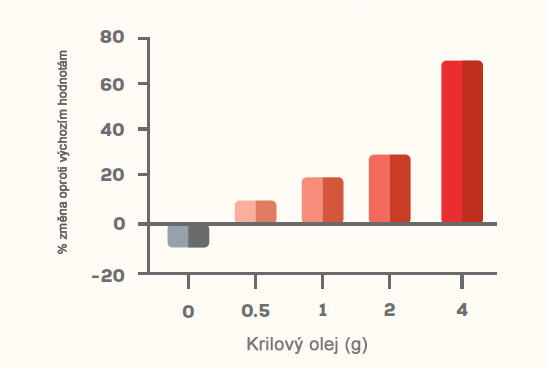

Změny omega-3 indexu u zkoumaných subjektů s jeho vykazovanou vysokou hodnotou
Krilový olej pozitivně ovlivnil omega-3 index u pacientů s onemocněním srdce a s vysokou výchozí hodnotou omega-3 indexu více (přesně o 9,8 %) v porovnání s pacienty, kteří užívali rybí olej. Osmitýdenní užívání 2 gramů krilového oleje denně zvýšilo omega-3 index více než každodenní užívání 2 gramů rybího oleje.
